VKRP Across the Academic Year
A combination of training opportunities, assessments, data reports, and resources help teachers to get the most out of their VKRP experience.

The Big Picture
Students enter pre-kindergarten and kindergarten with varying skills in literacy, mathematics, self-regulation, and social skills. The Virginia Kindergarten Readiness Program (VKRP), in collaboration with Virginia Literacy Partnerships (VLP), assesses pre-kindergartners and kindergartners during the first four to six weeks of school in these four critical learning domains. Using VKRP reports and recommended instructional resources, teachers can individualize and focus classroom instruction, with the goal of helping students grow across the year and leave more prepared to succeed in future grades.

Key Steps of VKRP
1. Complete a Training
Division leaders, program directors, and teachers participate in an in-person, remote, or an online training before the school year begins. These trainings provide an overview of the different VKRP components including the assessments, reports, and linked instructional resources.
2. Administer Assessments in Fall
Teachers administer the VKRP assessments for each student in their classroom. VKRP measures students’ skills in literacy (VALLSS), mathematics (EMAS), self-regulation, social skills, and Mental Health Well-being (CBRS). The VKRP assessment window is generally two weeks prior to a school or program’s VALLSS window in the fall.
3. Review Reports
Once assessments are complete, a series of reports are available at the student, classroom, school/program, and division levels. These online reports provide different ways to view and organize VKRP data.
4. Interpret Results
A big part of VKRP is all about helping teachers interpret and utilize their data to inform their instruction. Currently, VKRP offers an introductory online learning module that is designed to guide teachers in this process. In addition, data-use trainings are also available to schools, programs, and divisions and can be scheduled with the VKRP team. These sessions support teachers and instructional leaders in understanding how to use the data they have collected to support their students.
5. Use VKRP Instructional Resources
Teachers can access recommended instructional resources based on their student and classroom-level data. Resources include evidence-based strategies and activities that support students’ learning in the areas of mathematics, self-regulation, and social skills. In addition to being linked within reports, all of the instructional resources are readily available on the VKRP web portal so teachers can access them directly at any time.
6. Administer Assessments in Spring
In the spring, teachers assess children’s skills again and receive additional reports that highlight student growth across the year. The goal of VKRP is for students to enter future grades more prepared to learn and succeed.

